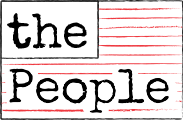Civics U: Neighborhood
A prefatory note: The ideas in this article are not new or original. But they may be so familiar that they are taken for granted and thus neglected, and therefore warrant review and renewed attention.
Civic education commonly teaches and equips people for engagement in governmental and political processes at national, state, and local levels. Such engagement includes activities such as voting, running for office, participating in public forums, attending city council meetings, contacting or writing letters to elected representatives, writing letters to newspapers, supporting campaigns, and so on.
At the same time, our society consists not only of government structures, but of social units such as family, tribe, and clan; church, synagogue, and religious organizations; service and recreational clubs and organizations; and communities and neighborhoods. Woven together, these make up the fabric, the whole cloth, of society. Of course there are various kinds of communities, and the sense of neighbors and neighborhood varies in different settings. In one setting farmers may help one another as neighbors; in another setting apartment dwellers may or may not know the people living next door or above or below them. Nevertheless, neighbors and neighborhood can be valuable to individuals and families, and to both adults and children.
A ‘community’ is often defined as the area where people live. But the most important aspect is that it is a group who share communication and identity. As such it can be in a small contiguous area, or it can exist across or within a larger population without there being direct contact and acquaintance between all members. A sense of community can be important as a basis for forming and acting on social, political, and economic goals. The current polarization in our country, our national community, reflects and perpetuates difficulty in communication as debate and disagreement displace reasoned discussion, and it seems to show a lack of a clear shared identity.
A neighborhood is a smaller, more immediate residential area where people can have direct contact and acquaintance with each other. It is often important as an environment in which kids grow up. Along with family, a child’s neighborhood – i.e., neighbors – can be a direct formative influence in shaping the child’s values.
Neighborhoods sometimes have elements of formal organization such as a neighborhood watch program or on-line sharing group. But the special thing about healthy active neighborhoods is that the neighbors actually know and recognize each other, talk and visit with each other, trust one another, and help each other. And healthy active communities share these same characteristics.
In addition to day-to-day spontaneous informal communications and relationships, other events and activities help sustain and build communities and neighborhoods. These can include block parties, school activities, holiday parades, county fairs, clean-up days, town ball teams, ice skating rinks and swimming pools in local parks, sledding slopes, community dances, progressive dinners, local music and other performances, and gathering places such as local coffee shops, pubs, and ice cream parlors – and even barber shops.
Communities and neighborhoods should have a meaningful place in the political system. When government at any level directs and funds programs, projects, and activities – whether initiated from the community or neighborhood level, or from “the top down” – these should be responsive and appropriate to community and neighborhood needs and goals. One test of good government is whether it is responsive to and good for communities and neighborhoods.
One organization that focuses on community and neighborhood activism is Ably. In ways not unlike The People, Ably works to promote community engagement to effect change on a local level amidst the polarization we experience between right and left. “Ably is built on a simple proposition: Democracy works best when we know and trust our neighbors.”
Ably’s website gives a number of ideas for community engagement. I would encourage readers to think of – and to support and initiate as needed – even more activities and events to strengthen their communities and neighborhoods.

